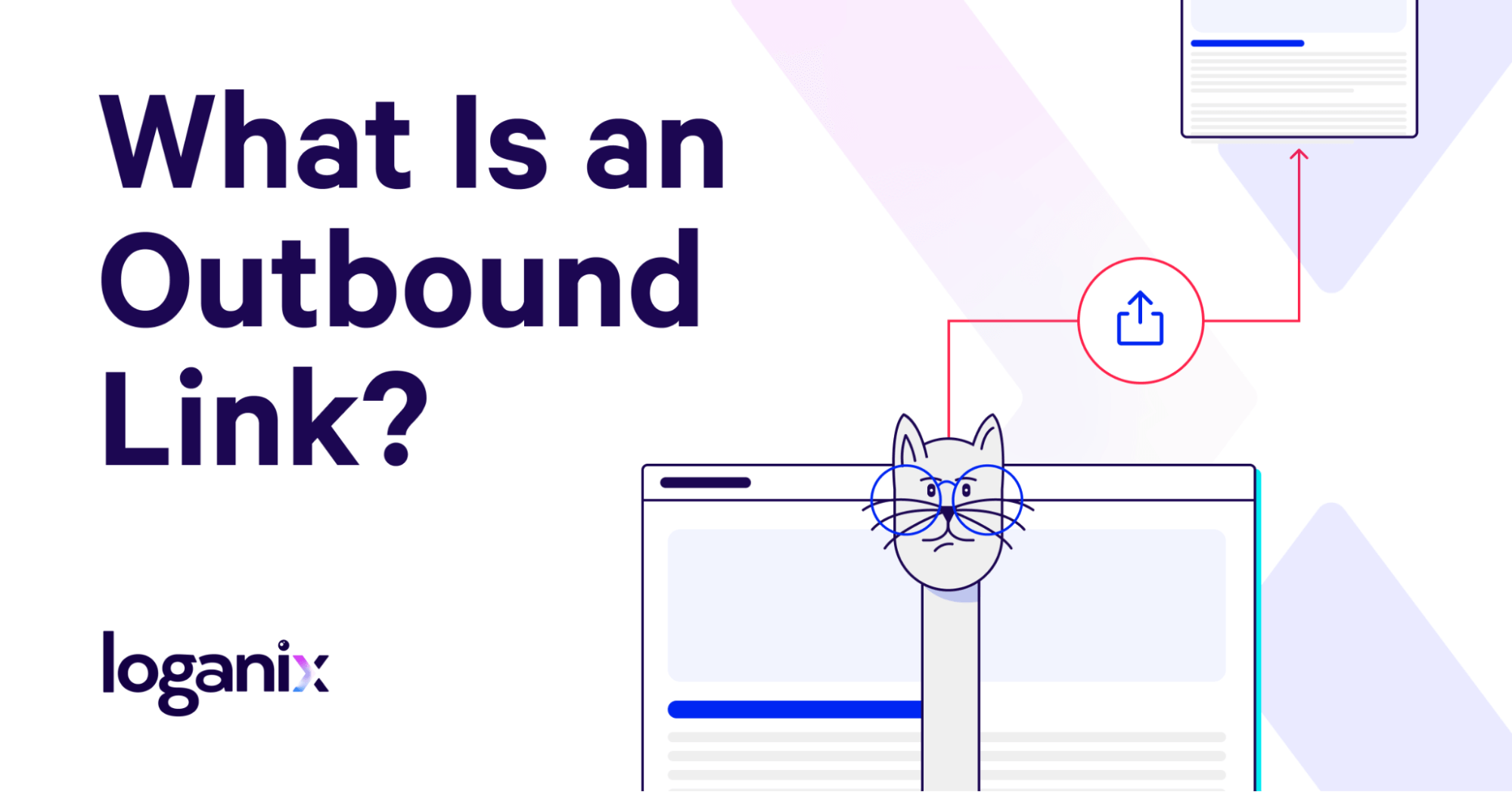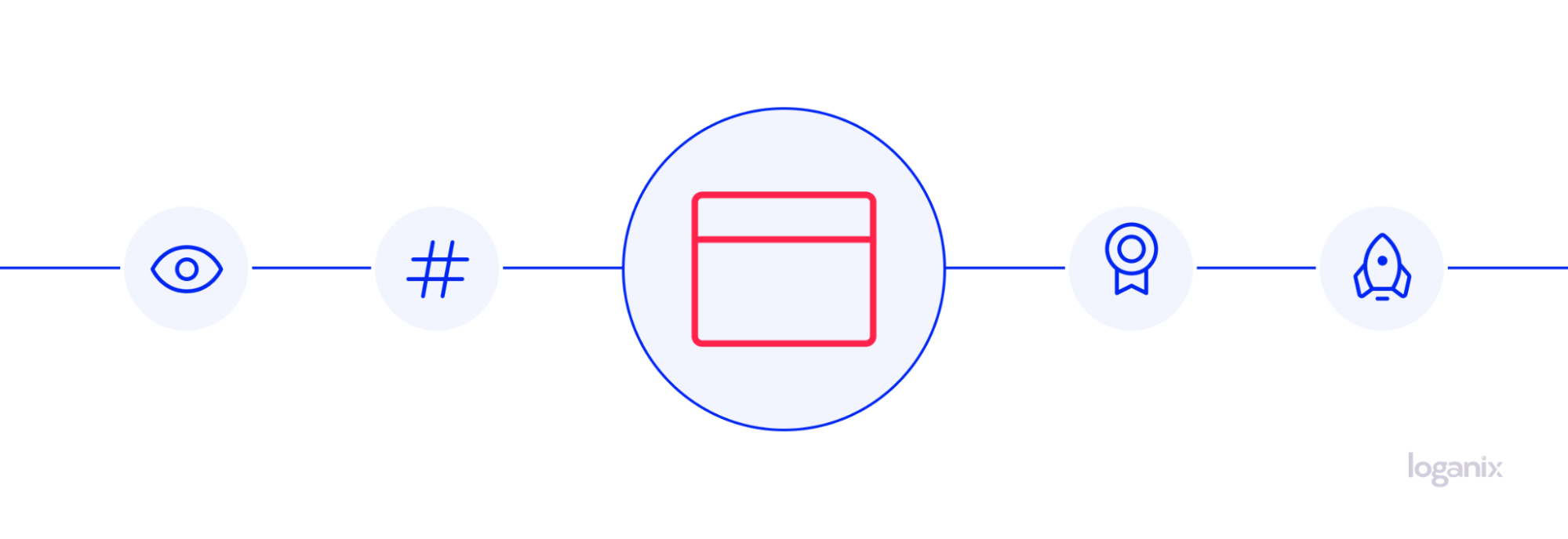What Is an Outbound Link? Insights on SEO External Links

Hand off the toughest tasks in SEO, PPC, and content without compromising quality
Explore ServicesSince the internet’s early days, the role linking practices play has evolved dramatically. Among these practices, outbound links have arguably arisen as the most influential.
But what is an outbound link in SEO? To shed some light on the topic, we
- answer the question, “What is an outbound link?”
- explore their importance to search engine optimization (SEO),
- and break down some best practices you can follow to maximize their value.
What Is an Outbound Link?
So, what is an outbound link in SEO? An outbound link—often called an outgoing link—in SEO is a hyperlink that links from one website to an external website.
Real-World Outbound Link Example 👉
From our “What is Website Structure” guide, we’ve added a link to a Hubspot case study. Here’s what that outbound link looks like in the web page’s source code:

Outbound links serve three purposes:
- they validate claims made in your content by referencing authoritative sources,
- they direct users to relevant content,
- and they pass along link authority, also called link equity or link juice.
Link equity represents the SEO value or authority a link transfers from one web page to another. Why is this important? When an external website, particularly a third-party website that Google and other search engines view as an authoritative source, links from one of their web pages to one of yours (or vice versa), it acts as a ranking signal, essentially saying, “Hey, this content offers valuable information that we think is important.”
It’s a vote of confidence that search engines place quite a lot of weight on. In fact, the quantity and quality of outbound links pointing to a web page or website rank amongst the most impactful ranking factors.
We’ll touch on that last point more in one of the below sections. But for now, let’s quickly distinguish between outbound and inbound links.
Learn more: Interested in broadening your SEO knowledge even further? Check out our SEO glossary, where we’ve explained over 250+ terms.
What Is an Inbound and Outbound Link?
You now know what an outbound link is—an outbound link originates from your site and directs users to an external website, serving as a backlink for the external site. On the flip side, inbound links come from external websites and point to your site, acting as backlinks for your own website.
Outbound links share your site’s authority with other pages, while inbound links bring authority to your site from external websites.

Learn more: how to get easy backlinks.
External Links vs. Internal Links
And to remove any remaining ambiguity, let’s clear up one more thing: the difference between an external link and an internal link.
An external like is an outbound link. Easy-peasy.
An internal link, as the name suggests, is a link from one of your web pages to another of your web pages. It’s internal.
Both types of links are essential for a website. External links offer depth and validation to your content. While internal links provide structure and ease of navigation, guiding users seamlessly through your website and allowing web crawlers to locate and index web pages, optimizing the crawl budget search engines assign to your website.
Why Are Outbound Links Important?

We’ve touched on link equity and crawl budget, so let’s tackle a common misconception among content creators: linking to an external website is harmful to a website or isn’t worth your time. But, as Google’s own resources suggest, the reality is quite different.
1. Builds Credibility and Demonstrating Expertise
In their Linking Out guide, Google emphasizes that “relevant outbound links can help your visitors.” How so? By strategically linking to credible and authoritative sources, you’re adding depth to your content and providing readers with a clear pathway to gauge your grasp of the subject and the thoroughness of your research.
2. Strengthens Topical Signals
In Google’s Link Best Practices for Google guide, they advise that links that use descriptive anchor text help both users and Googlebot understand the content they’re likely to be led to when following a link, enhancing the topical relevance of your content.
3. Addressing Concerns and Debunking Myths
There’s a widespread misconception that linking out to external websites might, in some way, harm your website. A “fact” that simply isn’t true. As Google points out, visitors often return to sites that provide valuable commentary and resources. As Google suggests, “consider outbound links as a common sense way to provide more value to your users, not a complicated formula.”
What Are the Different Types of Outbound Links
Outbound links aren’t created equally. There are different types, each with its purpose and potential impact on SEO.
Dofollow vs. Nofollow Links

Links are either categorized as “dofollow” or “nofollow.” A dofollow link signals to search engines that a link is to be considered for SEO ranking purposes, passing on link equity.
While a nofollow link, as the name suggests, signals search engines not to follow the link or pass on any link equity.
Why use one over the other? “Dofollow” links are typically used for reputable, trustworthy sources, while “nofollow” links are reserved for unverified content or when you don’t want to pass on link equity.
Learn more: nofollow vs. dofollow.
Linking to Reputable vs. Risky Websites
Linking to authoritative, relevant websites can bolster your content’s credibility and offer readers additional insights. Conversely, linking to questionable sites can harm your site’s reputation and potentially harm your SEO efforts. It’s a balancing act, and understanding the potential risks and rewards of different linking strategies is key.
FAQs
Q1: What Is Outbound Link Tracking in Google Analytics?
Answer: Outbound link tracking in Google Analytics allows content creators to monitor when visitors click on a link that leads to an external website. A handy feature that provides insights into user behavior and which external resources your target audience and readers trust the most.
Q2: Which is Better, Inbound or Outbound?
Answer: It’s not a matter of one being “better” than the other—both inbound and outbound links serve different purposes in SEO. Inbound links (or backlinks) bring authority to your site from external sources. On the other hand, outbound links offer depth to your content and can enhance user experience by directing readers to additional valuable resources.
Q3: How to Add an Outbound Link?
Answer: In most content management systems (CMSs), you can simply highlight the text you want to add a link to, click on the “link” or “hyperlink icon,” and then paste the external web page’s URL you wish to link to. Just be sure to double-check the link works. A broken link or leads to an irrelevant page will potentially harm your SEO efforts.
Conclusion and Next Steps
Congratulations—you now have a firm understanding of the role outbound links play in the success of your SEO strategy. But how exactly do you attract high-quality backlinks from authoritative third-party websites? That’s where expertise and strategy come into play.
Loganix is your partner in unlocking that potential. We don’t just offer link-building services—we provide tailored strategies that amplify your site’s authority, drive organic traffic, and position you as a leader in your niche.
🚀 Discover Loganix’s link-building services today and unlock the potential of high-quality backlinks! 🚀
Hand off the toughest tasks in SEO, PPC, and content without compromising quality
Explore ServicesWritten by Aaron Haynes on January 31, 2024
CEO and partner at Loganix, I believe in taking what you do best and sharing it with the world in the most transparent and powerful way possible. If I am not running the business, I am neck deep in client SEO.





